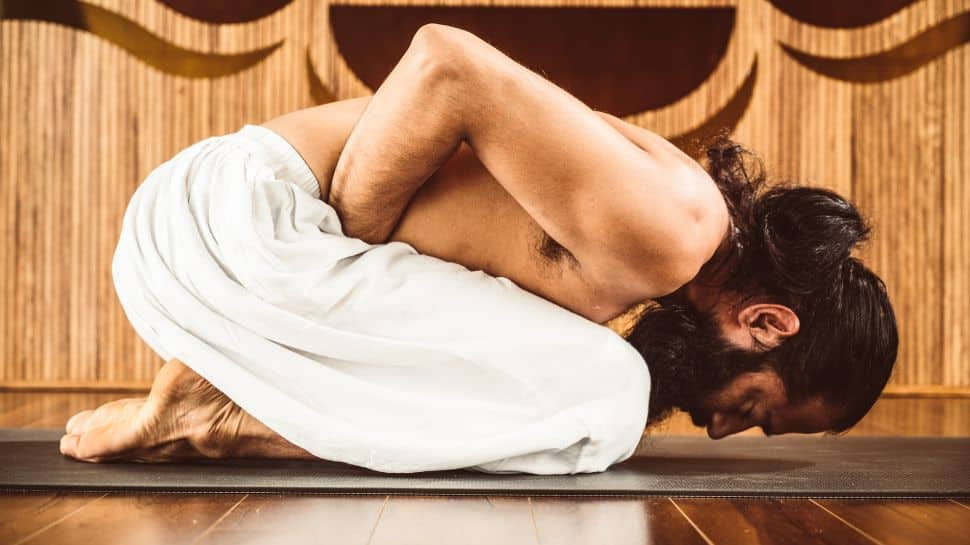High blood sugar is one of the root causes that can lead to several health issues and impact organs. It’s important to holistically manage diabetes and practising yoga asanas regularly can be very helpful. Here are 5 asanas that are particularly beneficial for people with diabetes.
- If the body has too little insulin or if it can’t use insulin properly, it leads to high blood sugar or diabetes
- Yoga asanas can help those with diabetes to maintain their blood glucose levels and lead a healthy life
- Experts suggest to practise these asanas regularly but one should check with medical experts before starting a new exercise regime
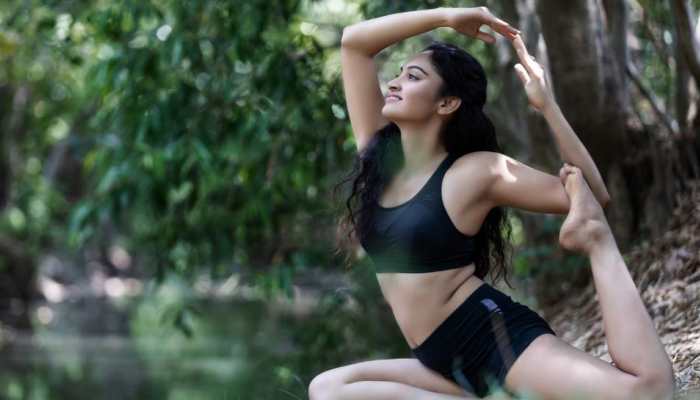
Diabetes occurs when glucose or sugar levels in the blood remain elevated. The food we eat gives us glucose and the insulin hormone helps transport this glucose into our cells so they can get energy from it. If the body has too little insulin or if it can’t use insulin properly, it leads to high blood sugar or diabetes.
Apart from your diet and medicines, practising yoga can go a long way in managing your diabetes. Himalayan Siddhaa Akshar, founder, Akshar Yoga Institutions, Himalaya Yoga Ashrama, World Yoga Organisation, shares, “Yoga asanas stretch the internal organs with a range of twisting poses. As a result, blood flow increases and the organs receive more oxygen, which enhances their functionality. The endocrine system performs better as a result.”
High Blood Sugar: Here are some Yoga Asanas to practise if you have diabetes
Yoga expert Himalayan Siddhaa Akshar lists the following Yoga asanas for diabetes:
1) Marjariasana (Cat-Cow Pose)
Urdhva Mukhi Marjari Asana
Kneel down with your knees under your hips and your palms under your shoulders. Breathe deeply, arch your back, and look upward.
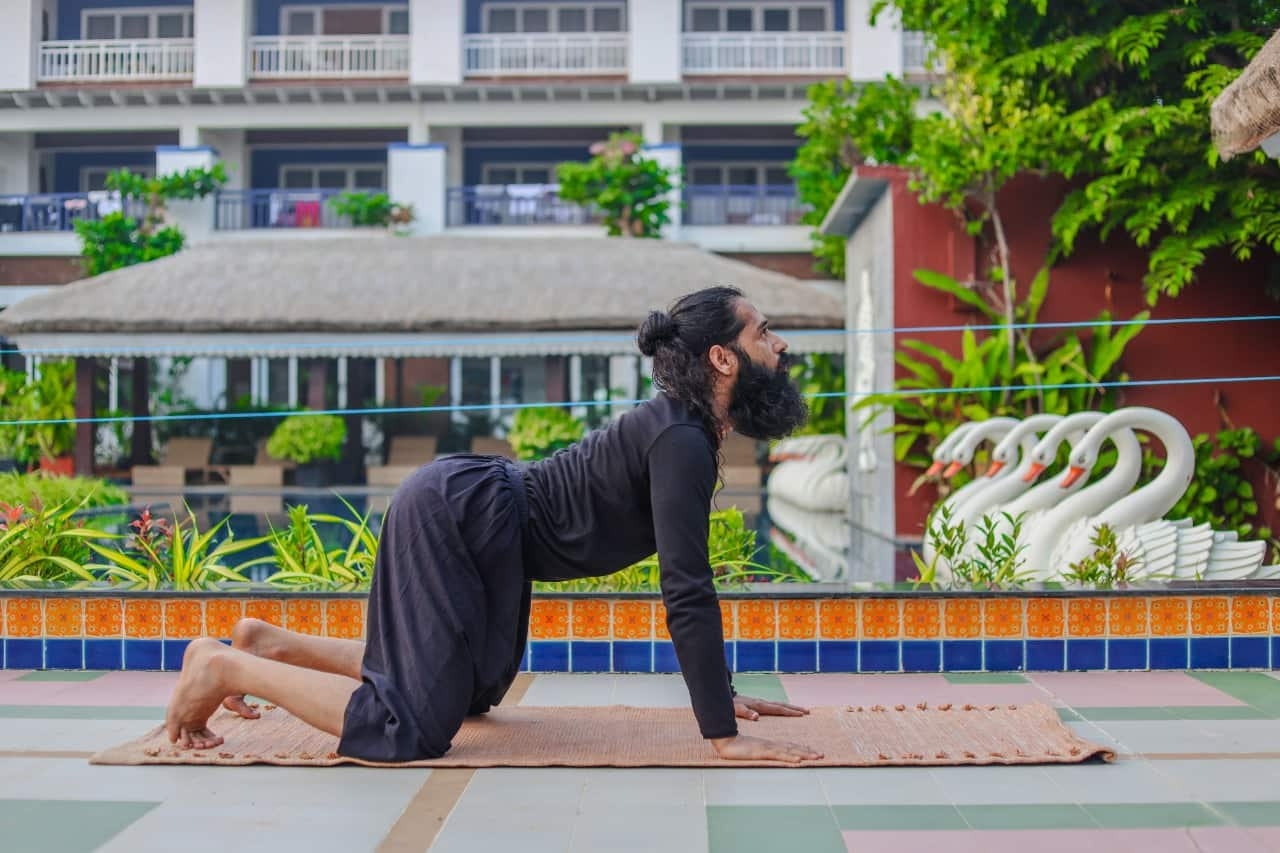
Adho Mukhi Marjari Asana
Breathe out, arch your back, and tuck your chin into your chest. Fix your attention on your navel.
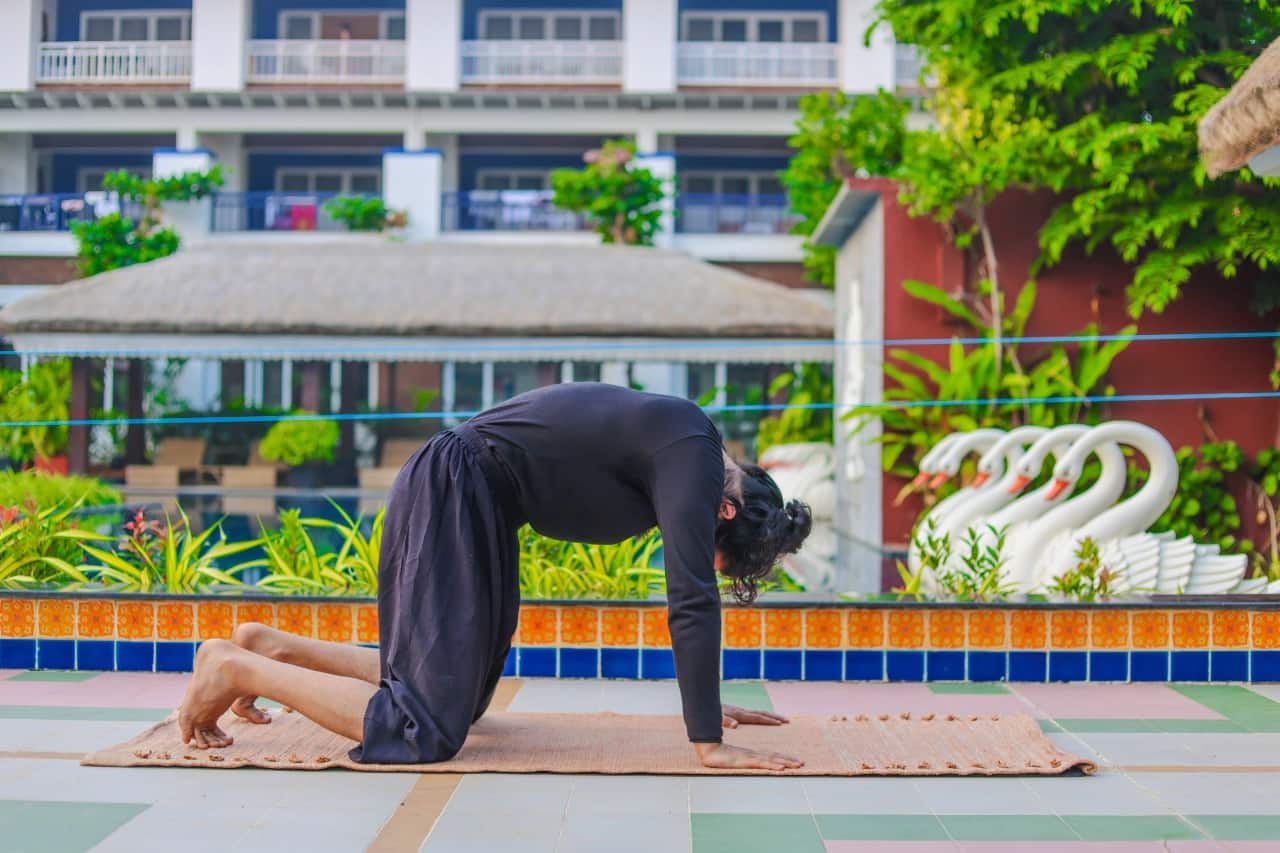
2) Paschimottanasana (Seated Forward Bend)
The first thing to do is to extend your legs forward. When doing this, make sure your knees are slightly bent. Lift your arms up while maintaining a straight spine. Start bending forward at the hips as you exhale, placing your upper body on your lower body. Put your fingertips everywhere you can reach, such as your big toes.
Word of caution: Practitioners who are pregnant, have sliding discs, suffer from sciatica, have asthma, or have an ulcer shouldn’t perform Paschimottanasana.

3) Ado Mukha Svanasana (Downward Dog)
Begin by getting down on all fours and placing your knees underneath your hips and your palms beneath your shoulders. Extend the elbows and knees while raising the hips. Apply pressure to your palms while opening your shoulder blades. Try to plant your heels firmly on the ground. Keep your focus on your big toes.
Word of caution: Avoid doing this position if you have diarrhoea or carpal tunnel syndrome. Avoid holding this position if you are pregnant or close to becoming pregnant. Avoid this asana if you move slowly, have high blood pressure, have a headache, or have a recent or persistent arm, hip, shoulder, or back injury.
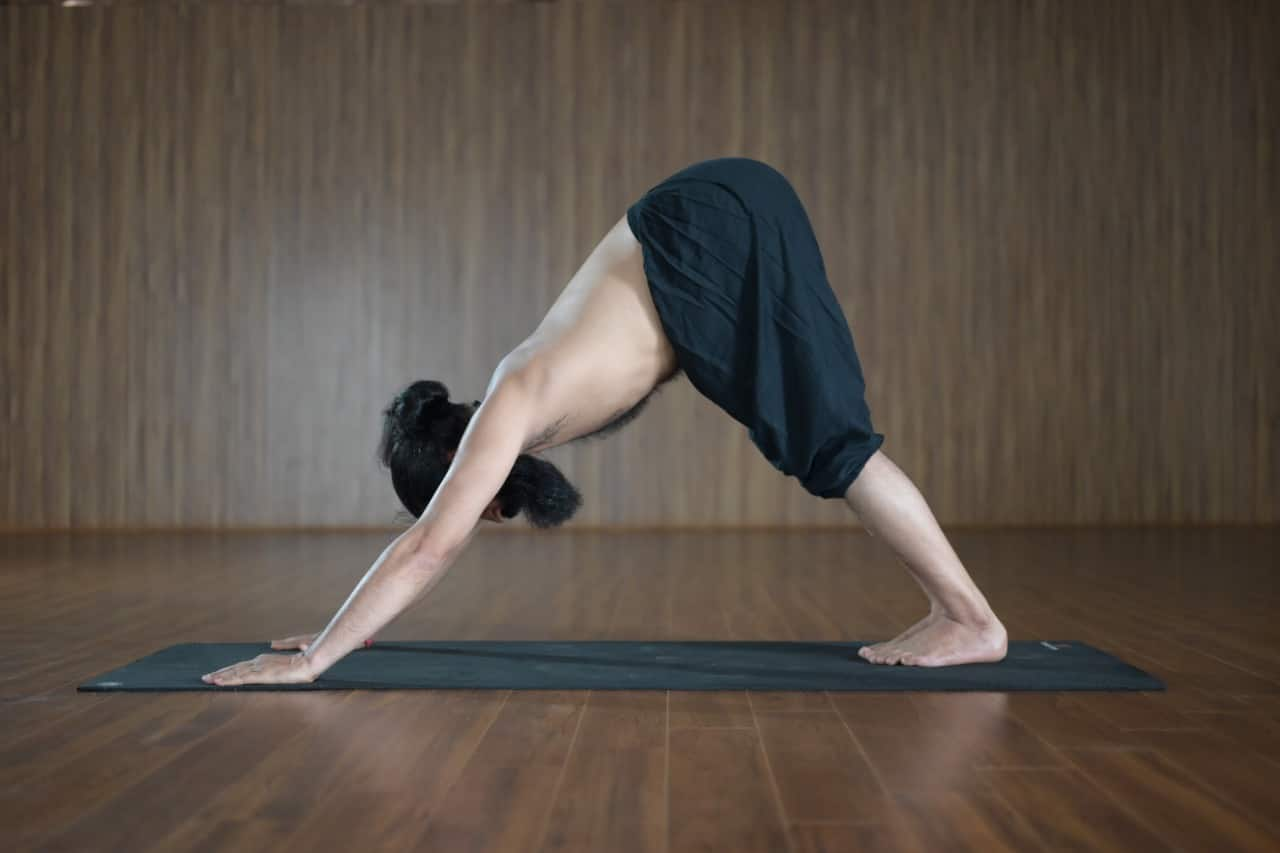
4) Balasana (Child’s Pose)
Kneel on the mat while sitting upright on your heels. Exhale while bringing your arms up above your head and bending your upper body forward. Put your forehead on the ground while supporting your pelvis on your heels. Ensure that your back is not arched.
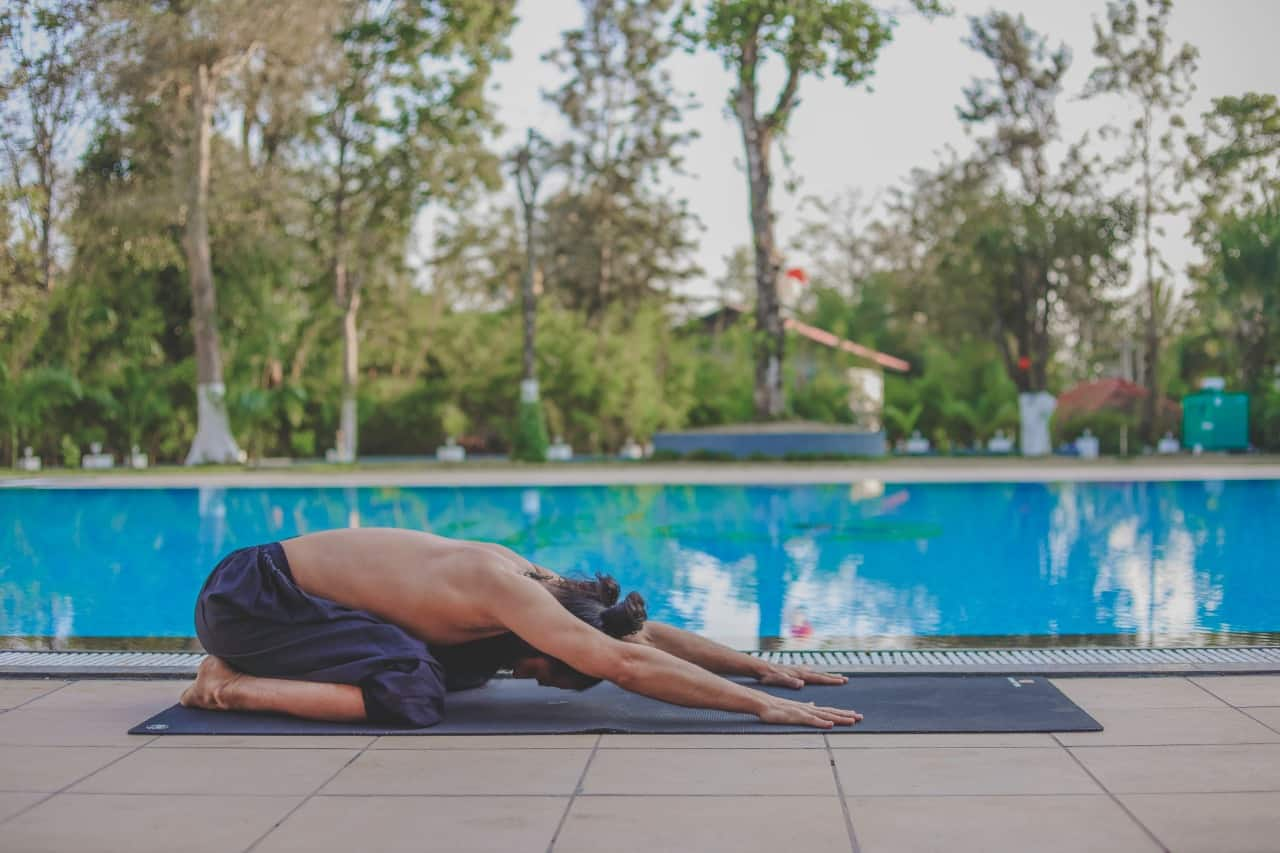
5) Mandukasana (Frog Pose)
As you sit in Vajrasana, extend your arms in front of you. As you ball your fist, your remaining four fingers should be positioned above your thumbs. Bend your arms at the elbows and put your balled-up fists over your navel. You should have your upper body bowed and above your bottom body. Looking forward while extending your neck.
Word of caution: Pregnant ladies should avoid performing this pose. If a person has ankle pain or injury or has just undergone ligament surgery, they should avoid this position. If one has ulcer issues, this stance must be avoided. If you have knee or back issues, kindly refrain from performing this pose.
Hold each position for three sets of 30 seconds. Practise each of these positions deliberately, take your time, and focus on your breathing while you hold each one.
